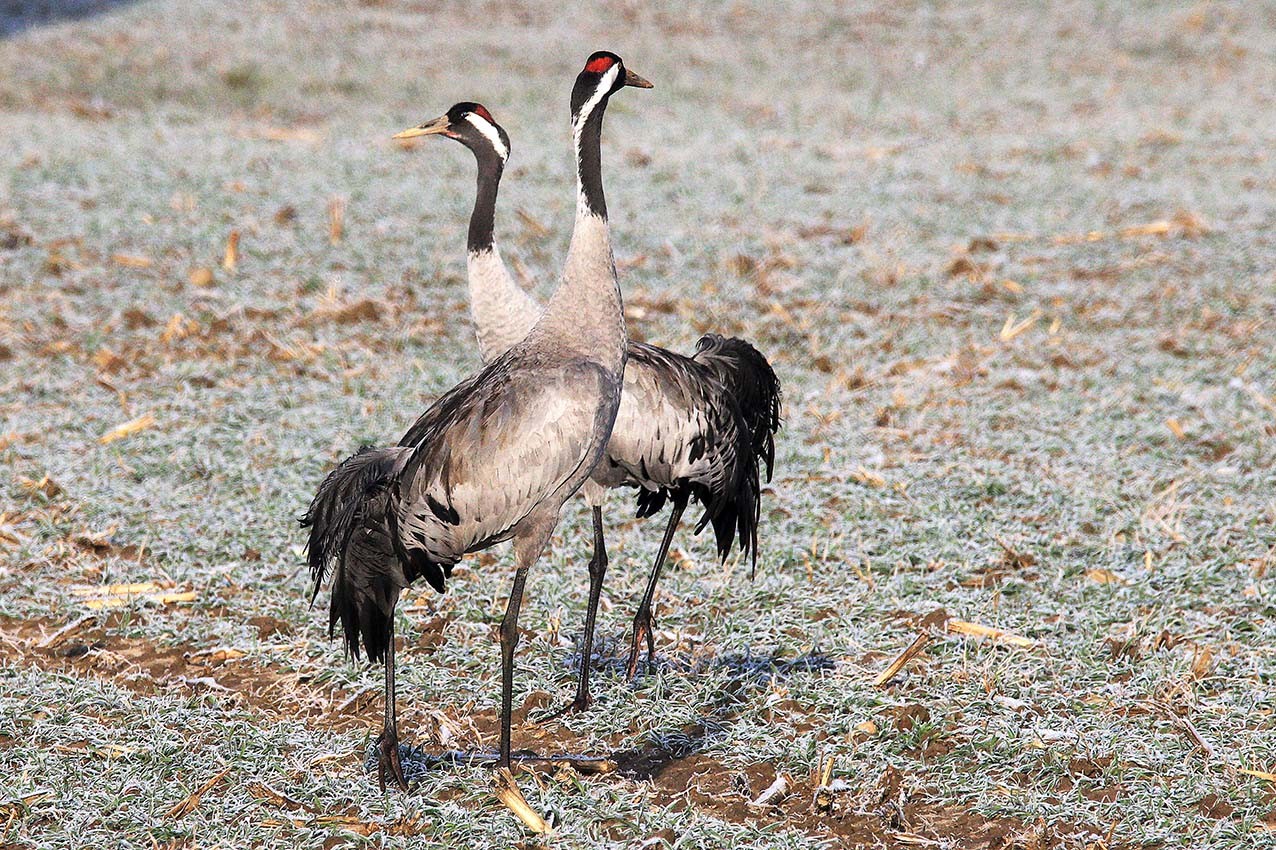Common Crane
A species of Cranes Scientific name : Grus grus Genus : Cranes
Common Crane, A species of Cranes
Botanical name: Grus grus
Genus: Cranes
Content
Description People often ask General Info
 Photo By Frank Liebig , used under CC-BY-SA-3.0-DE /Cropped and compressed from original
Photo By Frank Liebig , used under CC-BY-SA-3.0-DE /Cropped and compressed from original Description
The common crane is a large, stately bird and a medium-sized crane. It is 100–130 cm (39–51 in) long with a 180–240 cm (71–94 in) wingspan. The body weight can range from 3 to 6.1 kg (6.6 to 13.4 lb), with the nominate subspecies averaging around 5.4 kg (12 lb) and the eastern subspecies (G. g. lilfordi) averaging 4.6 kg (10 lb). Among standard measurements, the wing chord is 50.7–60.8 cm (20.0–23.9 in) long, the tarsus is 20.1–25.2 cm (7.9–9.9 in) and the exposed culmen is 9.5–11.6 cm (3.7–4.6 in). Males are slightly heavier and larger than females, with weight showing the largest sexual size dimorphism, followed by wing, central toe, and head length in adults and juveniles. This species is slate-grey overall. The forehead and lores are blackish with a bare red crown and a white streak extending from behind the eyes to the upper back. The overall colour is darkest on the back and rump and palest on the breast and wings. The primaries, the tips of secondaries, the alula, the tip of the tail, and the edges of upper tail coverts are all black and the greater coverts droop into explosive plumes. This combination of colouration ultimately distinguishes it from similar species in Asia, like the hooded (G. monacha) and black-necked cranes (G. nigricollis). The juvenile has yellowish-brown tips to its body feathers and lacks the drooping wing feathers and the bright neck pattern of the adult, and has a fully feathered crown. Every two years, before migration, the adult common crane undergoes a complete moult, remaining flightless for six weeks, until the new feathers grow. It has a loud trumpeting call, given in flight and display. The call is piercing and can be heard from a considerable distance. It has a dancing display, leaping with wings uplifted, described in detail below. 
Size
1.1 - 1.3 m
Colors
Black
Gray
White
Life Expectancy
17 years
Nest Placement
Ground
Feeding Habits
Common Crane is omnivorous, feeding on plant matter like seeds, fruits, and tubers, as well as animal prey including insects and small vertebrates. Foraging in groups, common Crane probes in shallow waters or fields, often consuming waste grain post-harvest, benefiting farmers. Dietary variety shifts with season, favoring animal foods during breeding.
Habitat
Common Crane thrives in environments ranging from boreal, taiga, and mixed forests near wetlands, to open steppe and semi-deserts near water, indicating a preference for peaceful, undisturbed breeding grounds. During migration and wintering, common Crane adapts to flooded areas, bays, meadows, and cultivated fields, with a reliance on shallow waters or reed cover. Their habitat demonstrates a versatile span across Eurasian woodland swamps to savanna-like dehesas.
Dite type
Omnivorous
People often ask
General Info
Feeding Habits
Bird food type
Distribution Area
This species is found in the northern parts of Europe and across the Palearctic to Siberia. Formerly the species was spread as far west as Ireland, but about 200 years ago, it became extinct there. However, it has since started to return to Ireland naturally and there are now plans to help it return to Ireland on a greater scale. Larger breeding populations can be found in Scandinavia, especially Finland and Sweden. The heart of the breeding population for the species is in Russia, however, where possibly up to 100,000 cranes of this species can be found seasonally. 
Species Status
Not globally threatened.